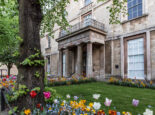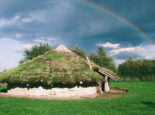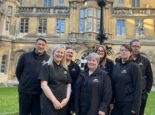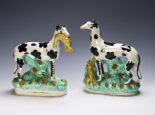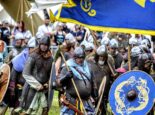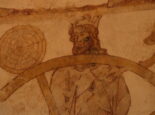Cromwell and the Cathedral
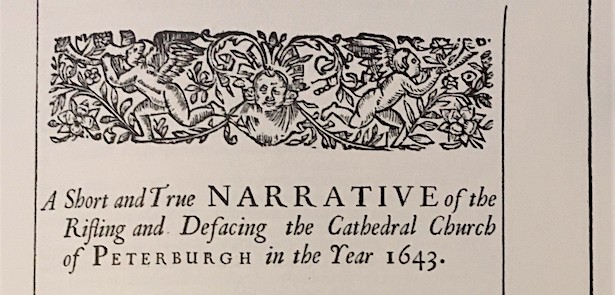
Words: Stuart Orme, Curator, The Cromwell Museum, Huntingdon
As the Covid pandemic eases many of us are starting to think of a weekend away in the UK visiting an historic city, perhaps making a point of visiting an historic cathedral with a guided tour to explore the stories of these beautiful buildings. There will usually, however, be a moment in the tour when the guide announces that some damage was done to the building during the English Civil War by Oliver Cromwell, often with the comment that he stabled his horses in the building.
Its true that many of our historic Cathedrals and churches were in some way damaged by the Civil Wars that tore the country apart in the 1640s. Some were damaged by being used as military strongpoints and hit by artillery fire; others were targeted by local Puritans who saw the chaos of the period as an opportunity to wreak their iconoclastic fury upon church decorations they saw as Popish and idolatrous. However, much more damage had often been wreaked by their grandparents during the religious upheavals of the Reformation of the 1500s.
About a third of our Cathedrals were deliberately damaged by Parliamentarian soldiers during the first 18 months of the Civil War. These were in Royalist towns which were captured by the Roundheads, with their stained glass smashed and marble tombs shattered as an expression of vengeance against a captured enemy town and of disapproval against iconoclastic church decorations. This was not done on the orders of Oliver Cromwell, who at the time was a backbench MP and relatively minor cavalry officer, but on the orders of Parliament and its commanders. Cromwell can only really be tied to the desecration of one Cathedral during this period: Peterborough, when both the future Lord Protector and the reality of a brutal Civil War intruded upon the town in April 1643.
By the early 1600s Peterborough was an unremarkable market town like so many others across the country, albeit dominated by a magnificent Cathedral church, as shown in John Speed’s map of the town published in 1611. The population numbered perhaps 2,000, with the economy centred around the markets held on the central Marketstede and trade from river traffic.
At the outbreak of the Civil War in England in 1642, many in Peterborough declared for the King. Many local gentry such as the Orme family (no relation) who lived in a grand house on Priestgate (today the site of the city’s Museum) and the Fitzwilliams of Milton Hall were Royalist in sympathy. The local clergy were of a similar inclination. Bishop John Towers was imprisoned in the Tower of London for protesting bishops being excluded from the House of Lords in 1642, and after his release the following year spent the duration of the Civil War at the Royalist capital at Oxford. A number of notable people from Peterborough (also including the Cathedral’s Dean, Dr Cosin) were listed in a Parliamentary ordinance in 1643 denouncing ‘delinquents’ or known Royalists in the area.
Peterborough had no substantial defences or a garrison of troops but given its position as a river crossing and its proximity to the Royalist garrison of Crowland it was a prime military target. It was briefly seized in early April 1643 by a raiding force of Royalist troops from their stronghold at Newark in Nottinghamshire, on a raid through Lincolnshire. Although they only remained in Peterborough for a few days this caused alarm in Parliamentarian circles. Accordingly Parliamentary forces commanded by Oliver Cromwell (then Colonel, prior to his subsequent rise to prominence) arrived in Peterborough on 18th April 1643 with a thousand men. Cromwell was quartered in the house at the Vineyard at the back of the precincts, and most prominent local Royalists captured with little resistance.
An eyewitness account by Francis Standish, later a member of the Cathedral clergy, asserted that the following day Cromwell’s soldiers went to work on the Cathedral. Here he said that they did “break and batter the Windows and any Carved work that was yet remaining, or to pull down Crosses wheresoever they could find them: which the first Founders did not set up with so much zeal, as these last Confounders pulled them down. Thus in a short time, a fair and goodly Structure was quite strip’d of all its ornamental Beauty and made a rueful Spectacle, a very Chaos of Desolation and Confusion, nothing scarce remaining but only bare walls, broken Seats and shatter’d Windows on every side.”
Tragically much of the contents of the medieval monastic library was taken out by the soldiers and burnt in the cloisters. One volume, the ‘Register of Robert of Swaffham’, was saved when a soldier called Henry Topclyffe who was taking it to be burnt was intercepted by one of the Cathedral’s singing men, Humphrey Austin. He persuaded the soldier that the Latin volume was a Bible. Whether it was the thought of burning a Bible, or a 20-shilling bribe that Austin offered, is unclear, but either way Topclyffe was persuaded to hand the book over and wrote a receipt that still survives inside the volume today.
Archaeologists excavating in the Cathedral Precincts in the summer of 2016 uncovered the detritus of Cromwell’s troops in a rubbish pit, including butchered animal bones, 1640s drinking vessels and clay pipes, musket balls and broken stained glass. A later survey of the stonework of the building has revealed evidence of musket and cannon shot, possibly for target practice, possibly to destroy stained glass that was out of reach.
The Cathedral saw no further military action for the remainder of the Civil War, although Cromwell lodged in the Vineyard on several further visits to the town. Local tradition has it that King Charles I spent two nights as Parliament’s prisoner on the way to Holdenby House in Northamptonshire in 1647 confined in the King’s Lodging above the Cathedral gateway.
Peterborough struggled to recover some form of normality after the Civil War, although a monument to this period can be seen in nearby Thorpe Hall. This was built between 1653 and 1656 by Oliver St John, MP for Totnes and Chief Justice of the Common Pleas, ironically using damaged building material taken from the Cathedral Precincts. Today owned by Sue Ryder, Thorpe Hall is accounted as being the best surviving Commonwealth period mansion in the country. In 1654 the diarist John Evelyn visited the house during the building works and described it as “a stately palace built out of the ruins of the Bishop’s palace and cloisters”.
Whilst Peterborough might have celebrated the Restoration of the Monarchy in 1660, the town suffered due to the events of the Civil War, with the Cathedral badly damaged and many of the local gentry heavily fined for supporting the Royalist cause. The Guildhall was commissioned as a centrepiece for the Market Square and completed in 1671, today still adorned with the Royal arms of Charles II as a symbol of Peterborough’s loyalty to the crown. It would take over a century before its fortunes would begin to recover fully from the effects of this tumultuous period in history.








